creating a new warm, caring & welcoming image, that is to say, hospitable in the truest sense of the term
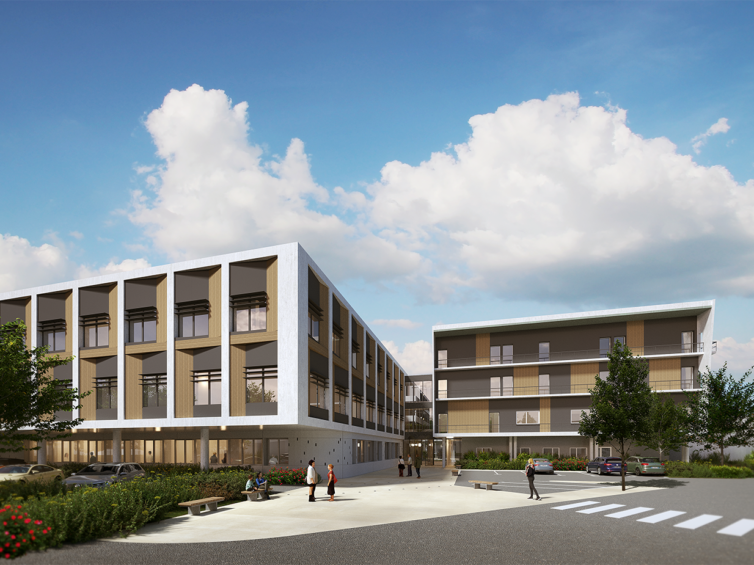
creating a new warm, caring & welcoming image, that is to say, hospitable in the truest sense of the term

To firmly establish it in the Poitiers university hospital site, the design of the Regional Cancer Center was guided by two affirmed objectives: firstly, the respect for the existing context at the scale of the site, implantation, architecture, and landscaping, and secondly, the creation, from the arrival, of a new warm, caring, and welcoming image, that is to say, hospitable in the truest sense of the term.
The absolute priority from a functional point of view was the perfect integration of the PRC2 into an existing building already in operation. For this “graft,” we sought to transcend the differences in the organization of each level to propose a reaffirmed, coherent project designed on an adaptable and flexible framework for the future.
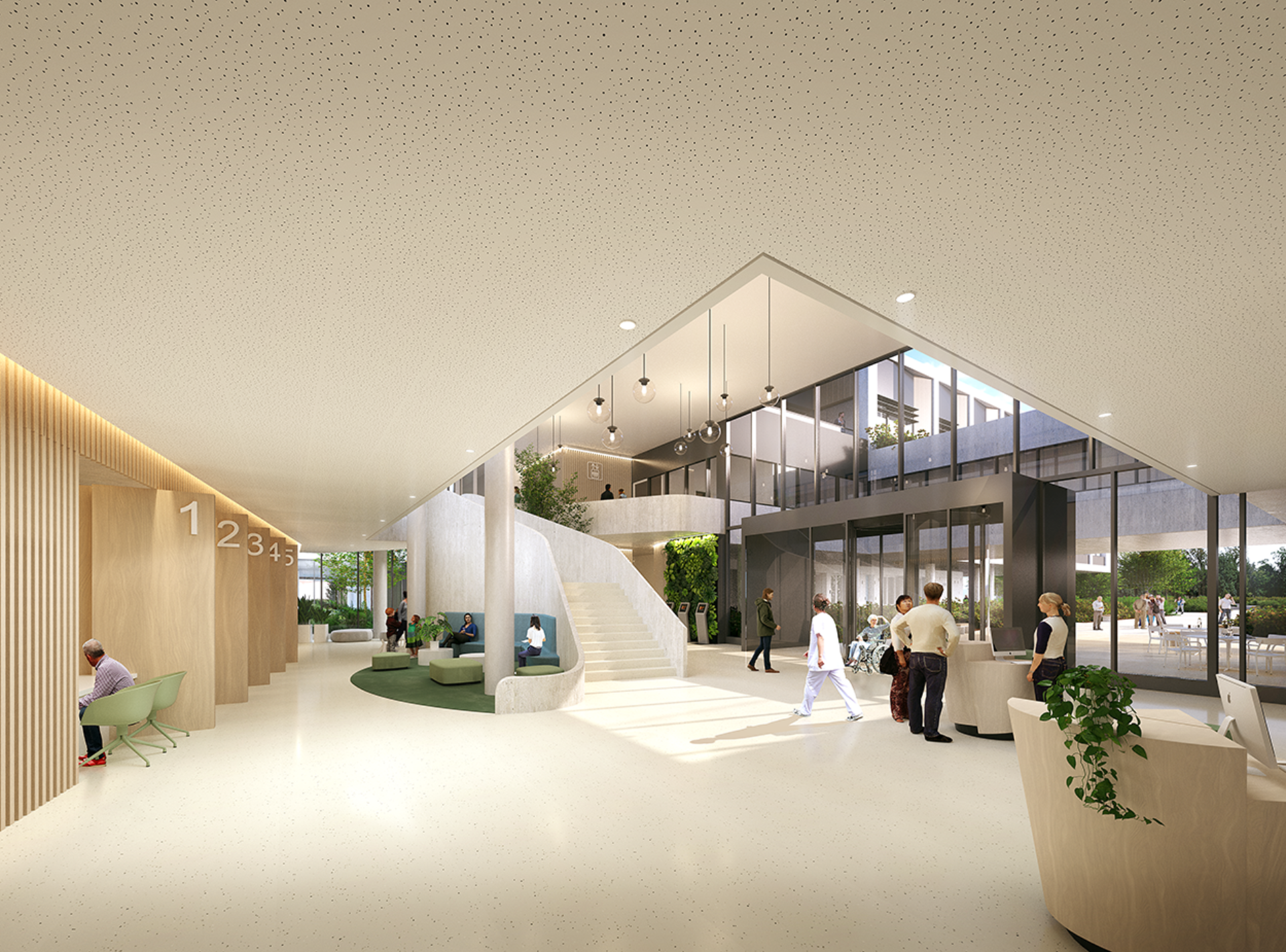
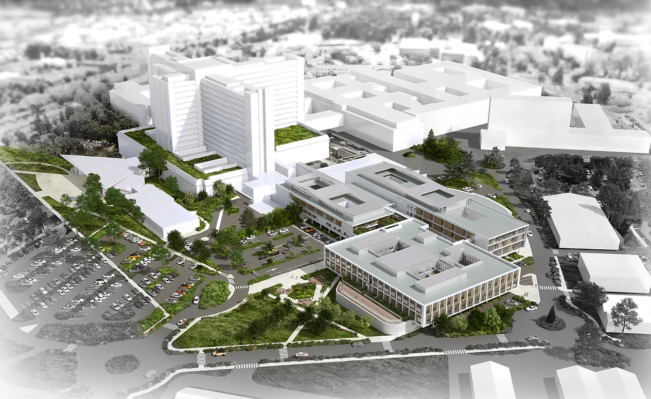
| program | construction of the PRC2 (Regional Cancer Center) extension of the PRC1+nuclear medicine+restructuring of the existing & rehabilitation of the existing facade |
| client | CHU Poitiers |
| address | 2 rue de la Milétrie • 86021 Poitiers |
| building type | care • heal |
| status | competition |
| expertises | |
| offices | paris |
| size | 11.477 m² |
| team | • client: university hospital center of Poitiers • architect: assar architects • technical engineering: Egis |
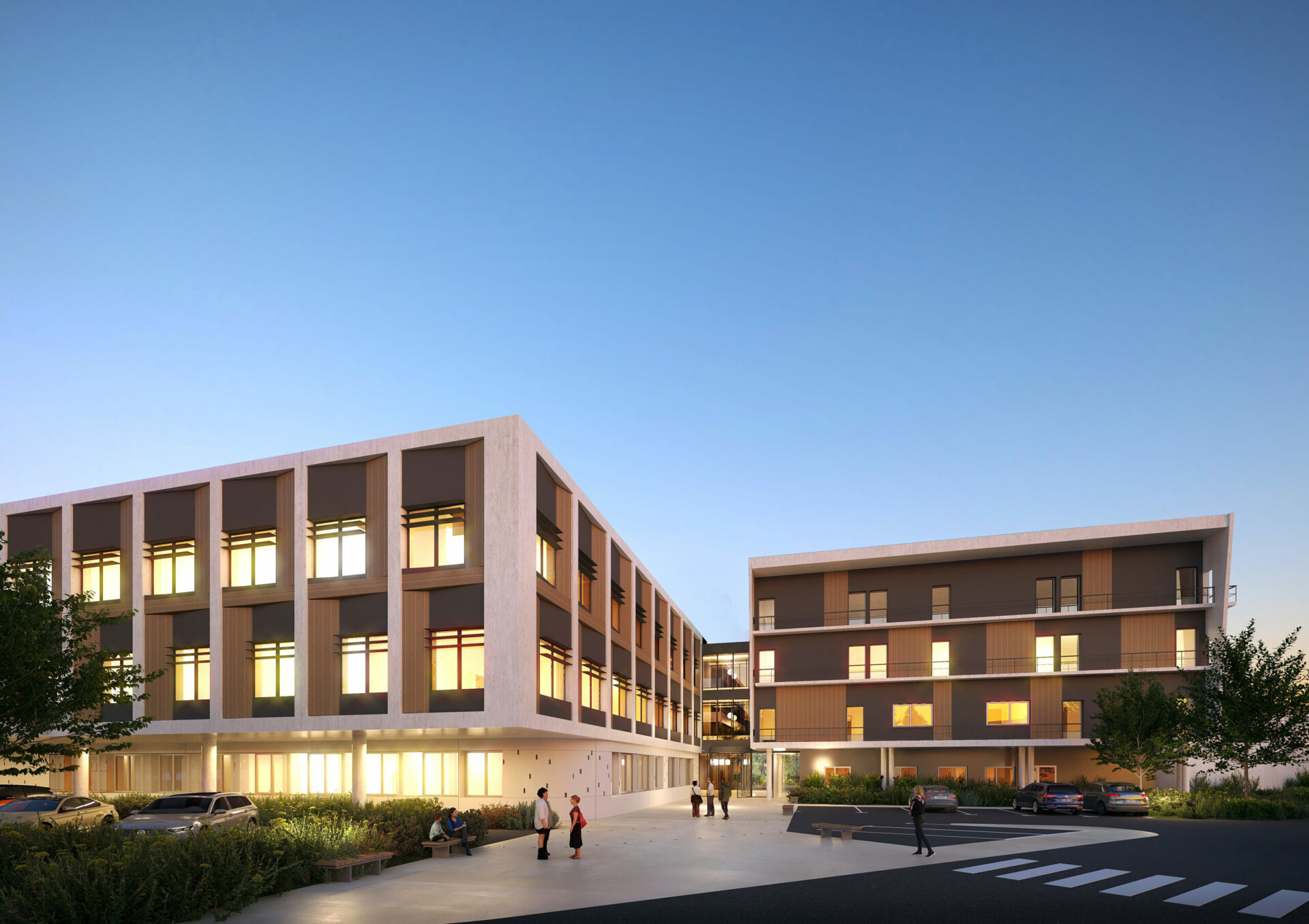
The challenges of readability, orientation, and identity of the PRC are addressed through a unitary architecture on a human scale. Our building placement strategy redirects the entrance of the unified PRC1 and PRC2 as a stage in a more global arrival route to the various buildings on the site.
The articulation of the new hall on the future facade, the image of the PRC, acts as a hinge to welcome, distribute flows to different services. It also connects to a separate entrance to nuclear medicine and the GIE. The interior routes have been designed with a forward march allowing the identification of a circulation direction, directing towards entrance flows and welcoming exit flows.
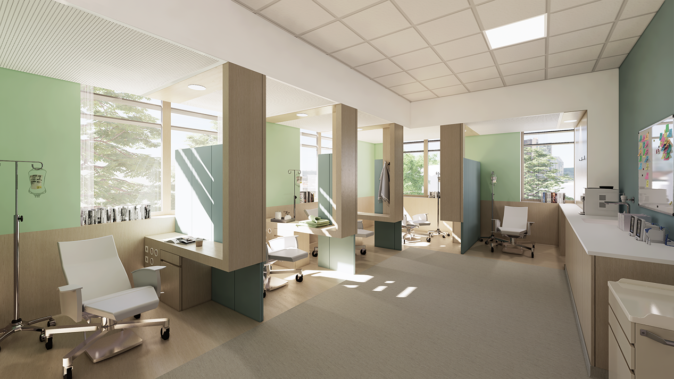
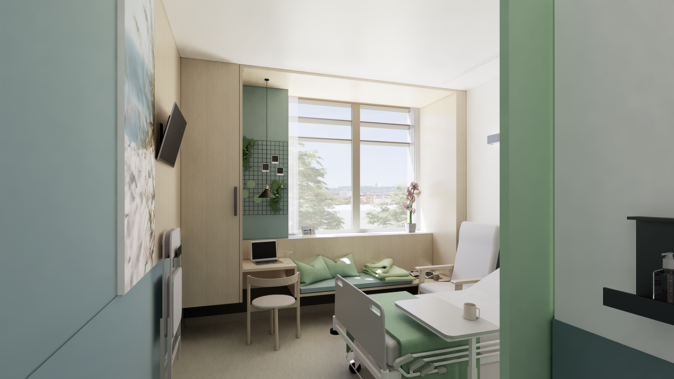
The generosity of this double-height reception space, in which a central staircase develops, creates the event characterizing the uniqueness of this hall.
The hotel quality is expressed through the concept of a “inhabited facade” which has been calibrated on a regular, modifiable, and evolving framework. Spaces of pleasure and comfort are arranged within the thickness of the facade: a bench, desk, and storage are near the window. This device frees up the entire width of the room for better ergonomics of the spaces.
The facades vary according to orientation and complement the thermal comfort and environmental performance of this project.
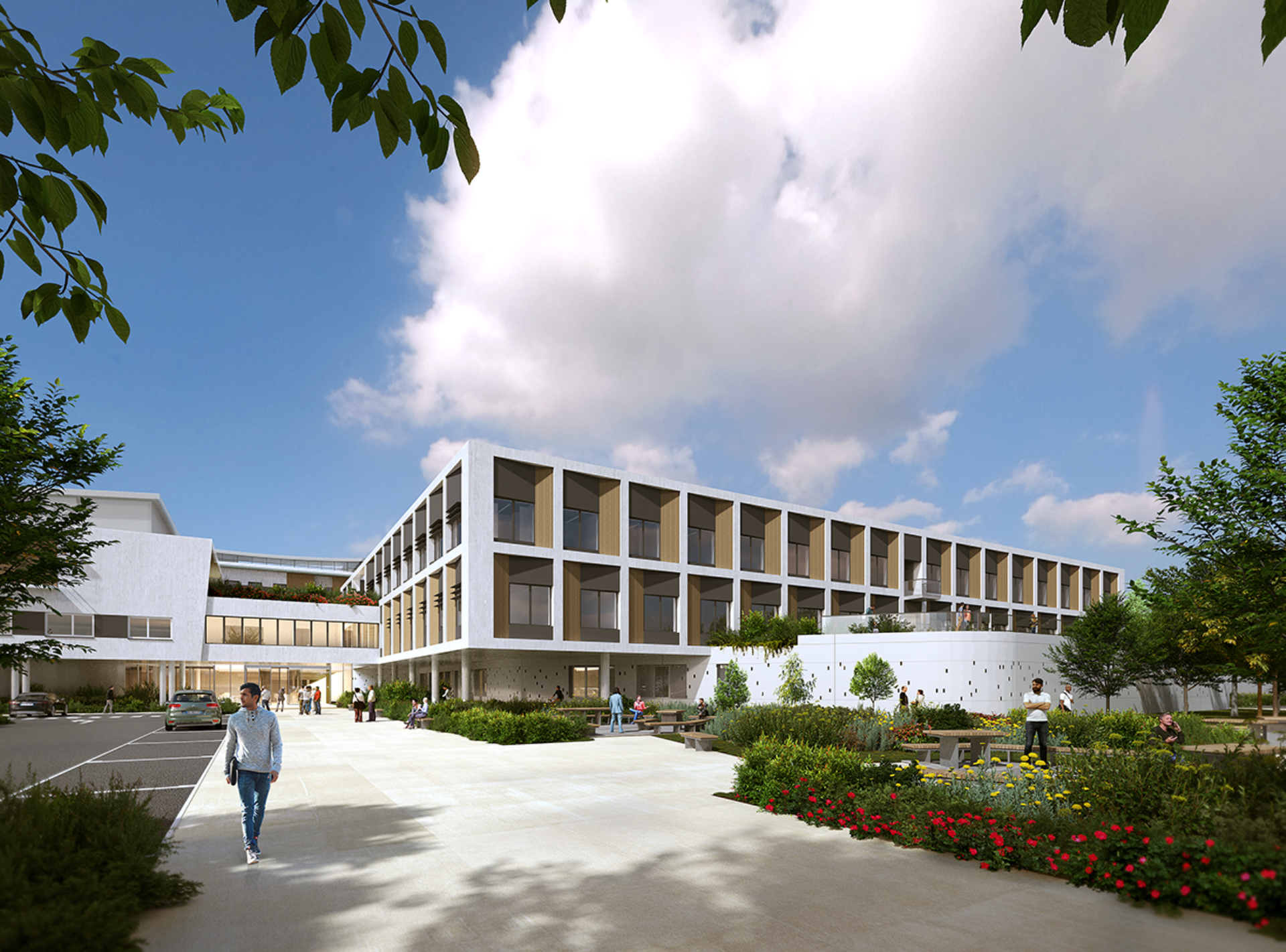
want to know more about assar or contribute to its continuous development